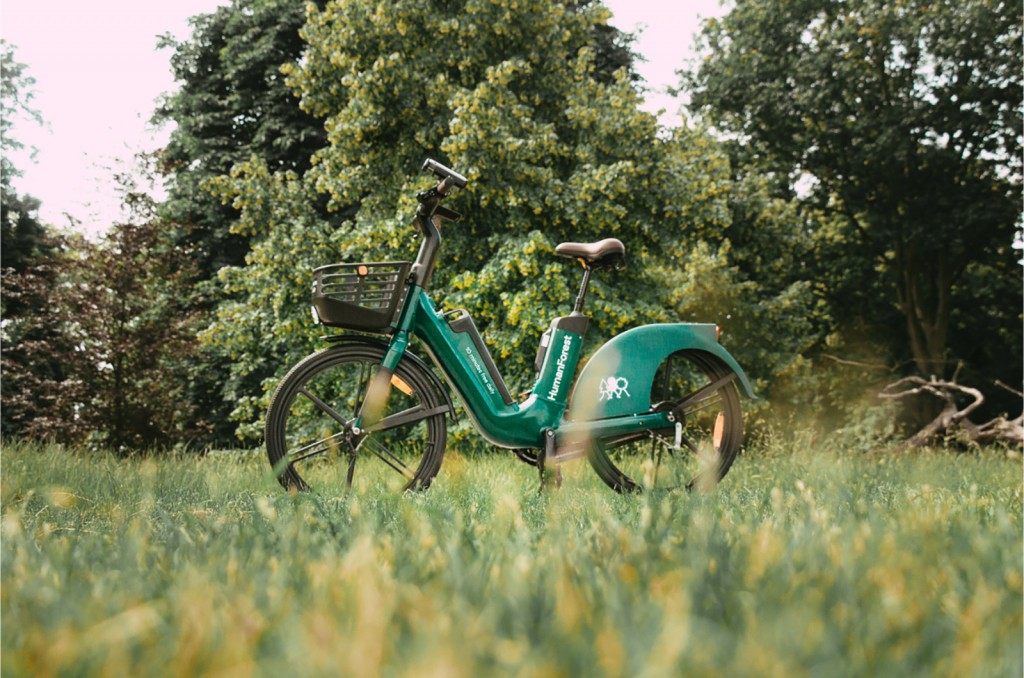Strategies for Success
The e-bike industry is booming, with the global market projected to grow from $61.89 billion in 2024 to $113.64 billion by 2030, driven by rising demand for sustainable transportation and advancements in battery technology. To capitalize on this growth, knowing how to market an e-bike business in 2025 is critical for standing out in a competitive landscape. Effective marketing strategies can attract eco-conscious commuters, fitness enthusiasts, and urban delivery businesses, turning your e-bike brand into a household name. This article outlines actionable steps for how to market an e-bike business in 2025, leveraging digital tools, community engagement, and sustainability trends to boost sales and brand awareness.
Understanding the E-Bike Market in 2025
Before diving into marketing tactics, it’s essential to understand the e-bike market’s dynamics. In 2025, e-bikes are no longer a niche product but a mainstream mode of transport, with 300 million units in use worldwide. Urbanization, rising fuel costs, and government incentives are driving adoption, particularly in regions like Asia-Pacific, Europe, and North America. Knowing how to market an e-bike business in 2025 requires aligning your strategies with these trends and targeting the right audience.
Identifying Your Target Audience
The first step in how to market an e-bike business in 2025 is defining your target audience. E-bike riders span diverse demographics, including:
-
Urban Commuters: Seeking efficient, eco-friendly alternatives to cars or public transit.
-
Fitness Enthusiasts: Using e-bikes for recreational rides or moderate exercise.
-
Delivery Businesses: Adopting cargo e-bikes for last-mile logistics.
-
Millennials and Gen Z: Prioritizing sustainability and flexibility in route choices.
Use tools like Google Analytics or social media insights to analyze customer preferences, such as age, location, and purchasing power. Create buyer personas to tailor your messaging, ensuring it resonates with each segment’s needs.
Analyzing Competitors
Competitor analysis is crucial for understanding how to market an e-bike business in 2025. Identify direct competitors (e.g., Giant Manufacturing, Trek Bicycle) and indirect competitors (e.g., traditional bike shops or scooter brands). Study their marketing campaigns, pricing strategies, and customer reviews on platforms like Yelp or Google. For example, are competitors focusing on online ads or influencer partnerships? This insight helps you identify gaps in the market, such as underserved niches or innovative features like smart connectivity, that your brand can capitalize on.

Building a Strong Brand Identity
A compelling brand identity sets your e-bike business apart. In 2025, consumers value brands that align with their values, such as sustainability and innovation. Here’s how to craft a brand that resonates.
Crafting a Compelling Brand Story
Storytelling is a powerful tool for how to market an e-bike business in 2025. Your brand story should highlight your mission, such as promoting green mobility or empowering urban lifestyles. For instance, emphasize how your e-bikes reduce carbon footprints (e-bikes save ~0.4 kg of CO2 per mile compared to cars) or feature cutting-edge technology like solid-state batteries. Share this story across your website, social media, and packaging to create an emotional connection with customers.
Designing a Memorable Visual Identity
Your visual identity—logo, color scheme, and website design—should reflect your brand’s values. Use eco-friendly colors like green or blue and ensure your website is user-friendly, with clear calls-to-action (CTAs) for purchasing or booking test rides. Invest in professional photography to showcase your e-bikes’ sleek designs, such as foldable models for urban dwellers or cargo e-bikes for businesses.
Leveraging Digital Marketing Strategies
Digital marketing is a cornerstone of how to market an e-bike business in 2025, given the rise in online e-bike sales (up 60% year-over-year in 2024). Here are key digital strategies to adopt.
Search Engine Optimization (SEO)
SEO drives organic traffic to your website. Optimize for keywords like “best e-bikes 2025” or “eco-friendly commuting.” Use Google Trends to identify seasonal search patterns, as e-bike interest peaks in summer. Create blog content on topics like “How to Choose an E-Bike” or “Benefits of E-Bike Commuting,” incorporating long-tail keywords to rank higher on search engines. Ensure your website is mobile-friendly, as 70% of searches occur on mobile devices.
Social Media Marketing
Social media platforms like Instagram, TikTok, and Facebook are ideal for engaging potential customers. Share visually appealing content, such as videos of e-bikes navigating city streets or user-generated content (UGC) from satisfied customers. For example, partner with local cyclists to post ride reviews on Instagram Reels, highlighting features like long-range batteries (>100 miles per charge). Use targeted ads on Facebook to reach specific demographics, such as urban commuters aged 25–45, with precise geographic targeting.
Influencer Partnerships
Influencer marketing is a growing trend for how to market an e-bike business in 2025. Collaborate with micro-influencers (10,000–50,000 followers) in the cycling or sustainability niche. They can showcase your e-bikes through authentic content, such as ride-alongs or unboxing videos. For example, a fitness influencer could highlight the health benefits of pedal-assist e-bikes, which burn 400–500 calories per hour. Offer influencers free test rides or discounts to encourage authentic endorsements.
Email Marketing
Email marketing builds relationships with customers. Send newsletters with product updates, exclusive discounts, or tips for e-bike maintenance. For instance, highlight new models like the Segway Xafari, launching in Q1 2025 with smart technology features. Use tools like Mailchimp to segment your email list based on customer behavior, ensuring personalized offers that drive conversions.
Harnessing E-Commerce and Online Sales
E-commerce is a critical channel for e-bike sales, with online purchases growing rapidly. Here’s how to optimize your online presence.
Building an E-Commerce Platform
Invest in a robust e-commerce website with features like secure payment gateways, product filters, and customer reviews. Offer “click and collect” options, allowing customers to buy online and pick up at local stores, which 45% of independent bike dealers reported as a growing trend in 2024. Highlight budget-friendly models ($200–$400) to attract cost-conscious buyers.
Leveraging Online Marketplaces
Sell on platforms like Amazon or eBay to reach a broader audience. Optimize product listings with high-quality images, detailed descriptions (e.g., “lightweight folding e-bike with 420W motor”), and competitive pricing. Monitor customer feedback to address concerns and improve listings, as reviews heavily influence purchasing decisions.
Engaging with Local Communities
Local engagement is key to how to market an e-bike business in 2025, especially in underserved markets.
Hosting Test Ride Events
Organize test ride events at local parks or bike shops to let customers experience your e-bikes firsthand. Highlight features like adjustable seating or advanced propulsion systems, as seen in Pedego’s Fat Tire Trike. These events build trust and allow potential buyers to test ride models suited for commuting or cargo delivery.
Partnering with Local Businesses
Collaborate with cafes, gyms, or coworking spaces to offer e-bike parking or charging stations, increasing brand visibility. For example, partner with a local delivery service to showcase cargo e-bikes, which are growing in popularity for last-mile logistics. Distribute business cards or flyers through these partners to drive foot traffic to your store or website.
Emphasizing Sustainability and Innovation
Sustainability is a major driver of e-bike adoption, with consumers prioritizing eco-friendly brands. Highlight how your e-bikes contribute to reducing carbon emissions and align with 2025 trends like recyclable batteries and smart connectivity.
Showcasing Eco-Friendly Features
Promote eco-friendly features, such as lithium-ion batteries with 99% market share due to their efficiency and recyclability. Create marketing campaigns around slogans like “Ride Green, Live Clean” to appeal to environmentally conscious consumers. Share data, such as e-bikes’ ability to save 0.4 kg of CO2 per mile, to reinforce your brand’s commitment to sustainability.
Highlighting Technological Advancements
In 2025, e-bikes feature innovations like GPS navigation, app integration, and regenerative braking. Market these features to tech-savvy audiences, emphasizing how they enhance the riding experience. For example, highlight the AIMA Big Sur’s Bafang H550 system for smooth performance, as showcased at CES 2025.
Utilizing Government Incentives and Policies
Government incentives, such as subsidies and tax breaks, are boosting e-bike adoption. Educate customers about available incentives, like Alameda Municipal Power’s $600 rebate for e-bike purchases. Partner with local advocacy groups, such as PeopleForBikes, to promote these benefits and position your brand as a leader in sustainable mobility.
Measuring and Adapting Your Strategy
Marketing is a trial-and-error process. Use analytics tools to track campaign performance, such as click-through rates for online ads or foot traffic from local events. Set measurable goals, like increasing website traffic by 20% or generating 100 test ride bookings per month. Adjust strategies based on data, focusing on high-performing channels like social media or SEO.
Leveraging Customer Feedback
Encourage customer reviews on your website or platforms like Google My Business to build trust. Address negative feedback promptly to show commitment to customer satisfaction. Use positive reviews in marketing materials to highlight reliability and quality, as 80% of consumers trust online reviews as much as personal recommendations.
Challenges and Solutions
Marketing an e-bike business in 2025 faces challenges like high upfront costs and supply chain disruptions. Address these by offering financing options or promoting budget-friendly models. Additionally, inconsistent regulations across regions can limit scalability. Stay informed about local laws, such as helmet or speed restrictions, and educate customers to ensure compliance.
Strategies for Success
The e-bike industry is booming, with the global market projected to grow from $61.89 billion in 2024 to $113.64 billion by 2030, driven by rising demand for sustainable transportation and advancements in battery technology. To capitalize on this growth, knowing how to market an e-bike business in 2025 is critical for standing out in a competitive landscape. Effective marketing strategies can attract eco-conscious commuters, fitness enthusiasts, and urban delivery businesses, turning your e-bike brand into a household name. This article outlines actionable steps for how to market an e-bike business in 2025, leveraging digital tools, community engagement, and sustainability trends to boost sales and brand awareness.
Utilizing Government Incentives and Policies
Government incentives, such as subsidies and tax breaks, are boosting e-bike adoption. Educate customers about available incentives, like Alameda Municipal Power’s $600 rebate for e-bike purchases. Partner with local advocacy groups, such as PeopleForBikes, to promote these benefits and position your brand as a leader in sustainable mobility.
Measuring and Adapting Your Strategy
Marketing is a trial-and-error process. Use analytics tools to track campaign performance, such as click-through rates for online ads or foot traffic from local events. Set measurable goals, like increasing website traffic by 20% or generating 100 test ride bookings per month. Adjust strategies based on data, focusing on high-performing channels like social media or SEO. For updates on e-bike laws and incentives, check the U.S. Department of Energy’s Alternative Fuels Data Center to stay informed on regulations that might affect your marketing and sales.
Conclusion
Knowing how to market an e-bike business in 2025 involves a blend of digital strategies, community engagement, and a focus on sustainability. By understanding your audience, building a strong brand, leveraging e-commerce, and highlighting eco-friendly innovations, you can capture a share of the rapidly growing e-bike market. Use tools like SEO, social media, and influencer partnerships to reach diverse customers, from urban commuters to delivery businesses. Partner with local communities and advocacy groups like Bicycling to amplify your message. With a strategic approach, your e-bike business can thrive in 2025, riding the wave of sustainable mobility and technological advancement.



